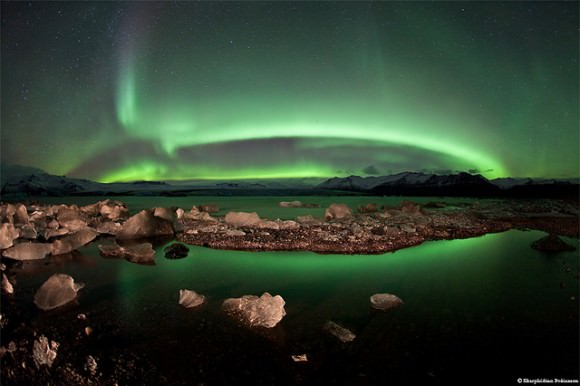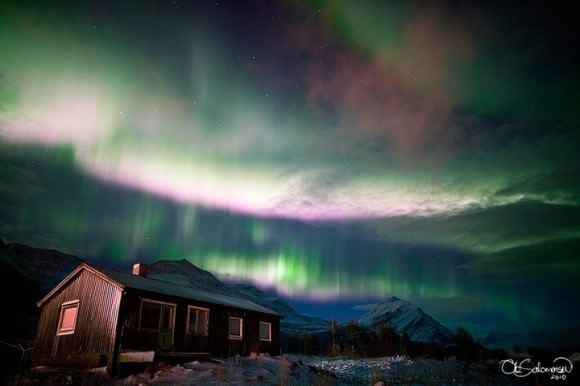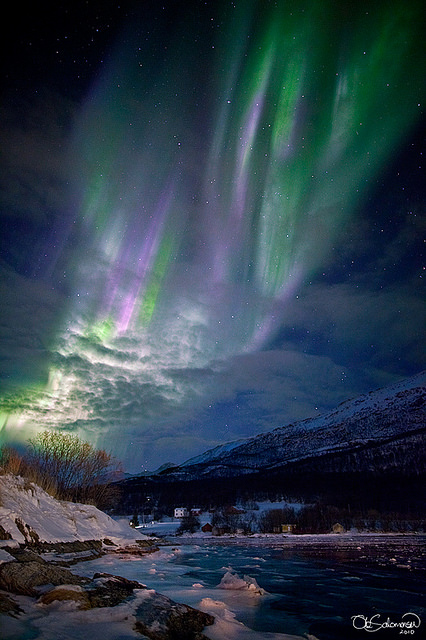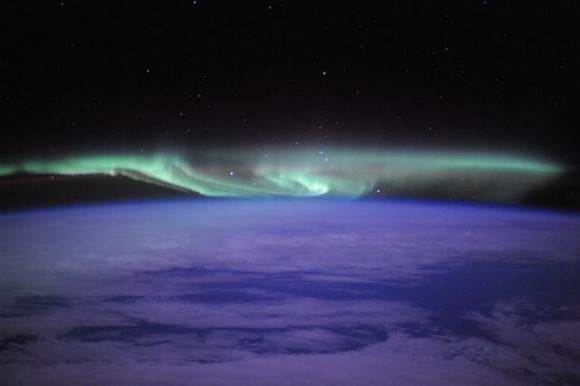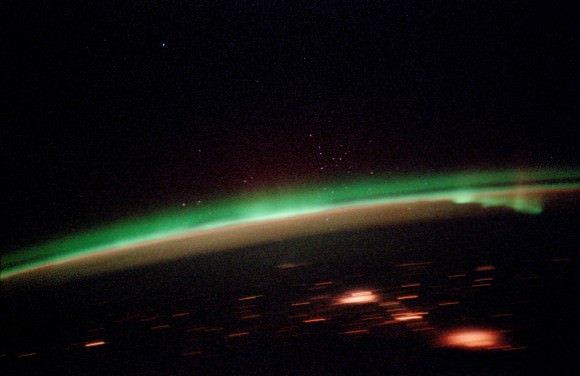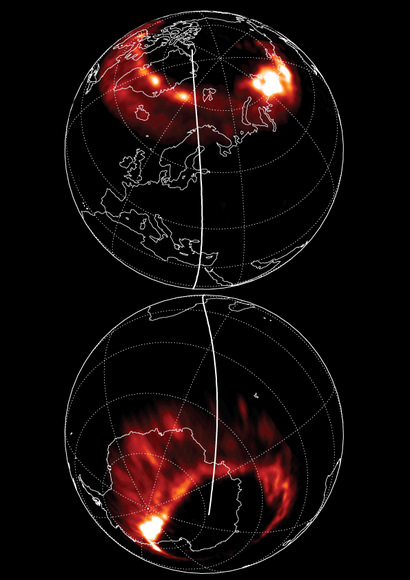 Seen the Northern Lights and you’ve Southern Lights? seen them all, hm? Not so.
Seen the Northern Lights and you’ve Southern Lights? seen them all, hm? Not so.It is commonly assumed that the aurora borealis in the Northern Hemisphere and the aurora australis in the Southern Hemisphere are mirror images of each other — but new research has revealed differences between the events.
The aurorae, commonly known as the Northern and Southern Lights, are spectacular natural light displays in the Earth’s upper atmosphere. The phenomenon is caused by charged particles from the solar wind striking atoms and molecules in the atmosphere.
It’s intuitive to think the Northern and Southern Lights are identical, because the charged particles causing the aurora follow the symmetric magnetic field lines connecting the two hemispheres.
But study co-authors Nikolai Østgaard and Karl Magnus Laundal, both of the University of Bergen in Norway, report in the journal Nature that there are differences between the phenomena.
“Here we report observations that clearly contradict the common assumption about symmetric aurora: intense spots are seen at dawn in the Northern summer Hemisphere, and at dusk in the Southern winter Hemisphere,” they write. “The asymmetry is interpreted in terms of inter-hemispheric currents related to seasons, which have been predicted but hitherto had not been seen.”
Østgaard and Laundal based their report on observations from a new set of global imaging cameras at each pole. The authors suggest that the observed asymmetry confirms the existence of inter-hemispheric, field-aligned currents related to the seasons, which had been predicted but never before observed.
But, some people still assume Northern and Southern Lights is twin. Yeah, they are sibling, but not twin. Even though they're sibling, each other has a thing which the other doesn't has. So, don't think if you see Northern or Southern, that's enough, that's all, they're different! See them all!
